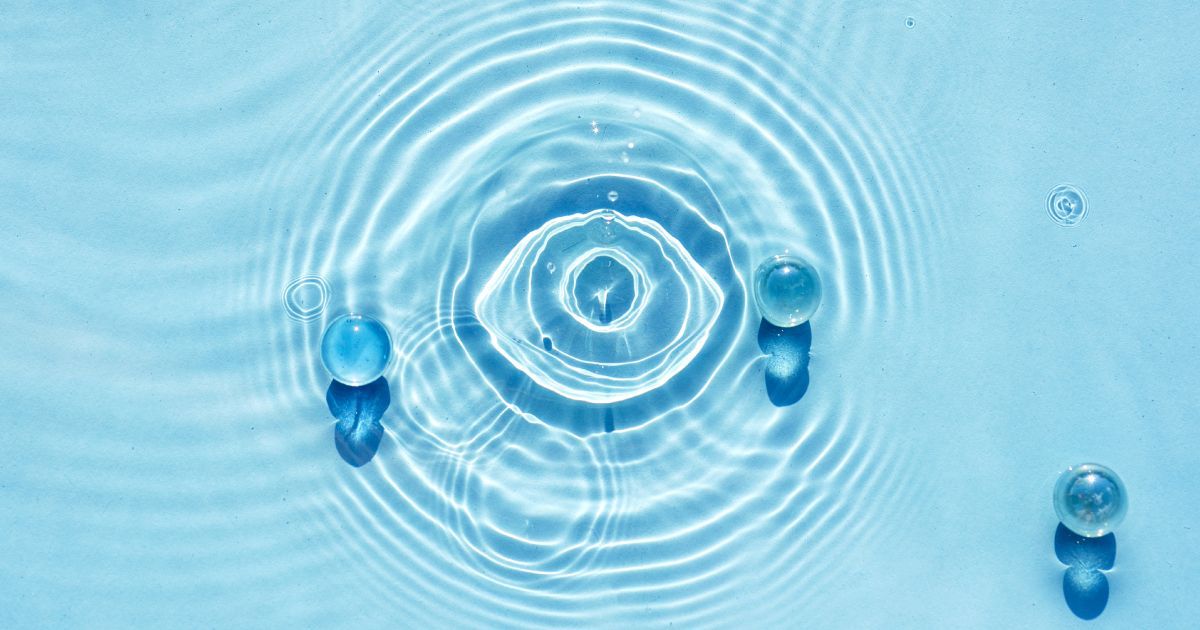The Science Behind Tears and Their Role in Eye Health

Read time: 5 minutes
Tears are often seen as a simple reaction to emotions, but they are much more complex and play crucial roles in maintaining eye health. Understanding the science behind tears can shed light on their composition, the different types, and how they contribute to our overall well-being. This article explores basal, reflex, and emotional tears, delving into their unique functions and impacts on ocular health.
The Composition of Tears
Tears are a combination of three main layers: a mucous layer, an aqueous (water) layer, and an oily (lipid) layer. Each layer serves a specific function, contributing to the overall effectiveness of tears in protecting and maintaining the health of the eyes.
- Mucous Layer: This innermost layer helps tears adhere to the surface of the eye. It ensures that the tear film spreads evenly over the cornea, providing a smooth optical surface and trapping debris and microorganisms.
- Aqueous Layer: The middle layer, which is the thickest, is primarily composed of water, along with essential salts, proteins, and antibodies. This layer hydrates the eye, supplies nutrients to the cornea and conjunctiva, and possesses antimicrobial properties to fight off infections.
- Lipid Layer: The outermost layer consists of oils produced by the meibomian glands. It prevents the evaporation of the underlying aqueous layer, ensuring that the eye remains moist for a longer period.
The intricate composition of tears is vital for their function. A disruption in any of these layers can lead to dry eye syndrome and other ocular health issues.
Types of Tears and Their Functions
Tears are not all the same. They are categorized into three types: basal, reflex, and emotional tears. Each type has a distinct composition and purpose.
Basal Tears: The Everyday Protectors
Basal tears are constantly produced to keep the eye moist and lubricated. They form a thin film over the surface of the eye, protecting it from dust, debris, and microorganisms. Basal tears also provide essential nutrients to the cornea, which lacks blood vessels and relies on the tear film for nourishment.
- Function: Basal tears are essential for maintaining a healthy eye surface. They ensure that the cornea remains hydrated and smooth, which is crucial for clear vision. Without basal tears, our eyes would become dry, irritated, and more susceptible to infections.
Reflex Tears: The Emergency Response
Reflex tears are produced in response to irritants such as smoke, wind, onions, or foreign particles. When the eye is exposed to these irritants, the lacrimal glands produce a large volume of reflex tears to flush out the offending substances.
- Function: Reflex tears act as a defense mechanism, protecting the eye from harmful agents. They help remove irritants and contain higher levels of antibodies and antimicrobial proteins to fight potential infections.
Emotional Tears: The Expression of Feelings
Emotional tears are triggered by strong emotions such as sadness, joy, fear, or stress. Unlike basal and reflex tears, emotional tears are linked to psychological states and are produced by the lacrimal glands in response to emotional stimuli.
- Function: Emotional tears are believed to play a role in emotional regulation. They help reduce stress and may contain higher levels of stress hormones and toxins, which are expelled from the body through crying. Additionally, crying can have a soothing effect, helping individuals process their emotions and experience relief.
Is crying good for you? Take a look at this article.
The Impact of Tears on Eye Health
Tears are crucial for maintaining eye health. Here’s how each type of tear contributes to ocular well-being:
- Hydration and Lubrication: Basal tears keep the eyes moist, preventing dryness and irritation. A well-lubricated eye is less prone to discomfort and more capable of clear vision.
- Protection from Infections: All three types of tears contain antimicrobial proteins that help protect the eyes from infections. By flushing out debris and pathogens, tears play a vital role in keeping the eyes healthy and free from diseases.
- Nutrient Supply: The aqueous layer of basal tears provides essential nutrients to the cornea, supporting its health and function. Without these nutrients, the cornea would struggle to maintain its transparency and refractive properties.
- Healing and Repair: Tears contain growth factors and other molecules that promote healing. When the eye is injured or irritated, tears help accelerate the repair process.
- Emotional Well-being: Emotional tears are linked to psychological benefits. Crying can help reduce emotional stress, providing a sense of relief and improving mental health.
Tear Film Disorders and Their Consequences
When the production or composition of tears is disrupted, it can lead to various eye conditions. One of the most common issues is dry eye syndrome, where the eyes do not produce enough tears, or the tears evaporate too quickly.
Symptoms of Dry Eye Syndrome
- Redness
- Itching
- A gritty or burning sensation
- Blurred vision
- Sensitivity to light
Causes of Dry Eye Syndrome
- Aging: Tear production tends to decrease with age.
- Medical Conditions: Certain diseases, such as Sjögren's syndrome, rheumatoid arthritis, and diabetes, can affect tear production.
- Medications: Some medications, including antihistamines, decongestants, and antidepressants, can reduce tear production.
- Environmental Factors: Exposure to wind, smoke, or dry climates can increase tear evaporation.
Management of Dry Eye Syndrome
- Artificial Tears: Over-the-counter artificial tear solutions can help supplement natural tear production.
- Lifestyle Changes: Reducing screen time, using a humidifier, and wearing protective eyewear can help manage symptoms.
- Medical Treatments: In severe cases, doctors may prescribe medications or recommend procedures to improve tear production and retention.
The Takeaway
Tears are far more than just a response to emotions; they are a complex and vital component of eye health. Basal, reflex, and emotional tears each play unique roles in protecting, nourishing, and maintaining the eyes. Understanding the science behind tears highlights their importance and underscores the need to address any issues that may disrupt their production or function. By recognizing the significance of tears, we can better appreciate their contribution to our overall well-being and take steps to ensure our eyes remain healthy and comfortable.
As we delve into the science behind tears, it becomes clear that these seemingly simple drops of fluid are essential to our health and happiness. Whether protecting our eyes from harm, helping us see clearly, or allowing us to express our deepest emotions, tears are a testament to the remarkable complexity of the human body. So the next time you find yourself tearing up, remember the intricate processes at work, and take a moment to appreciate the wonders of nature that help keep your eyes healthy and your vision clear.
Share this blog post on social or with a friend:
The information provided in this article is intended for general knowledge and educational purposes only and should not be construed as medical advice. It is strongly recommended to consult with an eye care professional for personalized recommendations and guidance regarding your individual needs and eye health concerns.
All of Urban Optiks Optometry's blog posts and articles contain information carefully curated from openly sourced materials available in the public domain. We strive to ensure the accuracy and relevance of the information provided. For a comprehensive understanding of our practices and to read our full disclosure statement, please click here.


















